#Ninhursag
Text

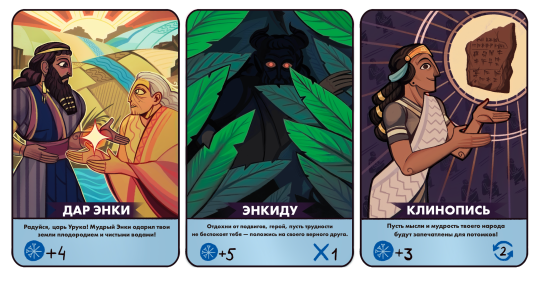
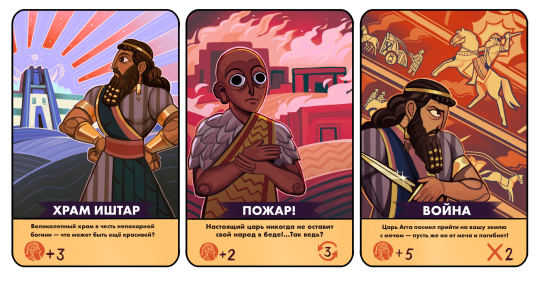
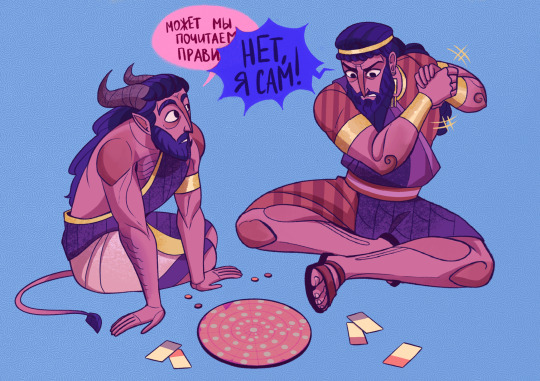
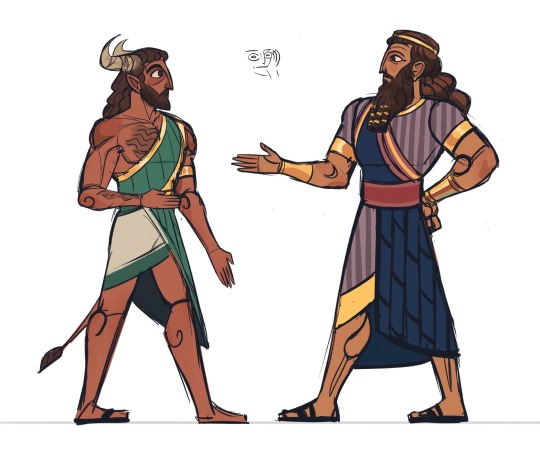

Aaand some of arts I made for a university. The whole first course we’ll be doing different projects based on already existing books or other media pieces, so I’ve chosen Epic Of Gilgamesh cause Mesopotamian mythology is cool and sexy.
The fist four pics is from the board game based on Gilgamesh’s story (1-3 is cards and the fourth pic is an illustration from the manual), the last two pics are just some goofy designs — Enkidu, Gilgamesh, Enki and Ninhursag. Sorry for Russian test, I’m just too lazy to translate.
Yeah, I drew them a little different from their original descriptions, but eh, it’s for a sake of diversity.
Oh, and I’m studying animation! I still can’t quite believe that I’m in this point of my life.
#mesopotamian mythology#sumerian mythology#ancient sumeria#Gilgamesh#Enkidu#Enki#Ninhursag#Humbaba#Heavens Bull#and others#babygworls
221 notes
·
View notes
Quote
Your heart is dusk, moonlight cannot enter you.
Enheduanna, Enheduana: The Complete Poems of the World’s First Author, to Ninhursag
109 notes
·
View notes
Photo

Kesh Temple Hymn
The Kesh Temple Hymn (c. 2600 BCE) is the oldest work of literature in the world, sometimes referenced as the oldest extant religious poem. It is a Sumerian praise song to the goddess Ninhursag and her temple in the city of Kesh, composed in eight sections of "houses" progressing from the temple's foundation to a cautionary welcome.
Continue reading...
145 notes
·
View notes
Text

The Empress. Art by Rubi Do Trinh, from the Star of Inanna Tarot.
𒁹𒁹𒁹 The Empress 𒀭𒂼
For this card we decided to depict the Mother Goddess Ki/Ninhursag. Ki is the Earth Mother Goddess ands chief consort of An and Ninhuršag was the Mountain Mother Goddess. According to Samuel Kramer, Ki and Ninhursag are one and the same, and we are inclined to agree.
In the Sumerian Creation myth, An and Ki were born of Nammu, the Primordial Mother Goddess. They then came together and Enlil was born. Enlil then separates Ki from An, and they unite. Their union leads to the creation of life on Earth as we know it.
Ninhursag has more written about her, but she is also conflated with the Earth and as a Mother Goddess. She has further associations with Mountains and is often depicted with an Omega-like symbol in her hair. Another part of the creation story is found in the myth “Enki and Ninhursag” where they work together to bring abundance, fertility and the possibility of agriculture to the world. She is an essential part of the process of creating humans along with the God Enki.
We can see the associations between the archetype of this card and Ki/Ninhursag. Fertility, growth, transformation, creation, pregnancy, childbirth, and nurturing are all aspects that are present in both. However, lesser talked about aspects of this archetype are enforcer of order, & protective yet healing and compassionate. In the Myth “Enki and Ninmah(an epithet)”, when working together to create humans, Enki ends up hurling insults at her creations. In response, she uses her creative powers to punish him, afflicting him with ailments and illnesses only she can heal. She then reveals her compassionate side and ends up healing him.
The Cuneiform is: 𒀭 Dingir + 𒂼 ama = Divine Mother
#Rubi Do Trinh#Star of Inanna Tarot#The Empress#Major Arcana#Tarot#Folklore#Sumeria#Inanna#Ki#Ninhursag
12 notes
·
View notes
Text
The Sumerian Seven: The Top-Ranking Gods in the Sumerian Pantheon | Ancient Origins
https://www.ancient-origins.net/human-origins-religions/sumerian-seven-top-ranking-gods-sumerian-pantheon-007787

View On WordPress
#4th millennium BC#Akkadian#An#Ana#Anthropomorphic#Anu#Anutu#cuneiform#Ea#Enki#Enlil#Euphrates River#Inanna#Iraq#Ishtar#Ki#Mesopotamia#Nanna#Ninhursag#Ninlil#Ninurta#polytheism#Sumer#Sumerian Pantheon#Tigris River#Ur#Utu#Ziusudra
2 notes
·
View notes
Text

Day 16 & 17, Lisin and Asalluhi
These two were drawn together, though they don’t have any association besides having the same mom (Ninhursag)
Lisin:
One of several deities to have a change of gender, being reguarded initially as female and then later male (not universally, some places they were still considered female) hence I thought it would be cool to have their gender be ambiguous. Lisin’s father is Sul-pa-e (to be drawn soon!)
Their character is little known - early on they had associations with various offering goods - minerals, gazelle horns, and medicinal plants, then their male character had an affiliation with fire.
Asalluhi:
I’ve only read a few papers about him, so my info is limited. From what I understand he was the patron god of Kuara associated with divination and having many of the characteristics of his father, Enki. Then at some point he was absorbed into Marduk. I basically consider him “Diet Marduk”.
#annunaki#inktober2022#mythtober2022#ninhursag#missed opportunity to have drawn Lisin and Ashgi together#poor planning I guess
20 notes
·
View notes
Note
Hello, do you know if Ninhursag and Anu (the Celtic goddess, not the Mesopotamian god) are the same being? Or are they both aspects of Gaia?
Ninhursag is almost identical to Demeter/Ceres. They are very much related to the Earth, but they are not the Earth Goddess herself but more like emanations that are separate beings.
In Celtic/Irish mythology, Anu/An/Danu is the Great Goddess, manifesting on the world, so in that case, it's like an equivalent to an aspect of Gaia.
13 notes
·
View notes
Photo
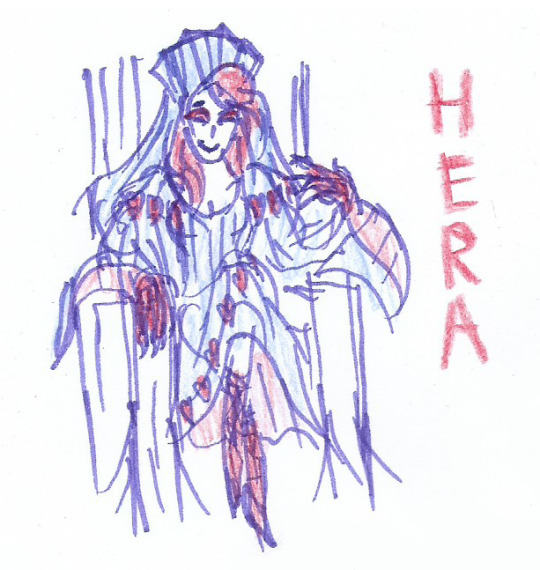


1. Hera, the ancient Greek goddess of marriage, and queen of the gods. She was the wife of Zeus, with her infamous jealousy over his countless affairs playing a role in many myths.
2. Mokosh, Slavic goddess of womanly crafts, especially associated with spinning and weaving. The female household spirit Kikimora may be derived from her.
3. Ninhursag, ancient Mesopotamian goddess of nature and wildlife, and wife of Enki. Though called “mother” in many of her titles, this often did not literally associate her with motherhood, but indicated reverence on the part of the speaker.
#angelology#demonology#Greek Mythology#slavic mythology#mesopotamian mythology#hera#mokosh#ninhursag#Tears from the Heavens#oc
17 notes
·
View notes
Text
Ki (del cuneiforme KI, en sumerio "tierra"), es la diosa de la Tierra, una de las más importantes de la mitología sumeria, y por extensión, de Mesopotamia.
Eruditos como Samuel Noah Kramer coinciden en que esta diosa, es comúnmente conocida por su nombre más popular de la diosa madre Ninhursag y sería la misma figura, pero no está absolutamente claro.
Con su consorte An/Anu y Ki engendraron a los Anunnaki, siendo la más prominente de estas deidades Enlil (En=Señor - lil=del aire o de la atmósfera), que al nacer, separó el Cielo (para An) de la Tierra (para Ki y Enlil), y así se creó el Día (el Alba).

#ki#cuneiforme#sumeria#mitos#anthropology#nature#sumerian#ancient sumeria#tierra#diosa#mitologia#mesopotamia#erudito#samuel noah kramer#Ninhursag#An#Anu#anunnaki#deidad#deidades#Enlil#Señor#aire#atmosfera#Cielo#día#Alba
10 notes
·
View notes
Text
Info: Okay, so it's an au where the Federation either collapsed for some reason (Nero showed up early and destroyed all the major Federation planets?) or never existed.
And Nyota Uhura is a scary BAMF (I don't know what she does. Bounty hunter? Assassin?) with even more terrifying matched set of hunting hounds on her leash. And her hounds, of course, are the very feral but still human (or Vulcan) Kirk and Spock.
They only obey her and whenever she lets them off the lead they absolutely destroy everything in their path. Their main target along with, you know random Klingon Warbirds, stray planets, whatever is there.
Um. Dirty porn is very welcome (and perhaps required?) Nyota's hounds sleep at her feet in bed? Sometimes she has to pull them off each other in public?
Oh, or the time one of her hounds is hurt and she has to find them a doctor (possibly as gun point). And it is McCoy who is all "What? I am a doctor, not a veterinarian!" until he sees them and realizes what she means by hounds and then just goes, holy shit.
And, wow, I feel like a bad person. Someone please write this so I don't have to! (thread)
Fill: 1/1 + AO3
Author: hounds-morrigan (Vaingirlfic) (ninhursag)
Archive link
0 notes
Text

Mesopotamian gods designs for an animation I’ve been working on lately (for my university, huh).
Goofy stuff.
#mesopotamian mythology#sumerian mythology#ancient sumeria#Anu#Enlil#Enki#Ninhursag#Istar#Ashur#Nergal#Ereshkigal#Sin#Utu#Gula#Ninlil
118 notes
·
View notes
Text
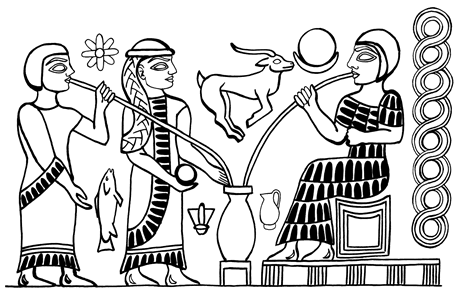
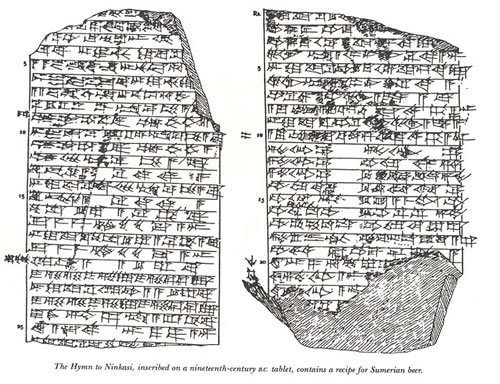

The Hymn of Ninkasi
The Ancient Sumerians loved their beer. In fact they loved their beer so much that thousands of years later ancient recipes and artwork depicting beer making and beer drinking survive to this day. Many of these recipes are being recreated and brewed thousands of years later by crafted breweries today. They drank it for ceremonial and religious reasons, they drank it for nutritional reasons, and they drank it for the same reasons we drink it today. You know ... to get pissed.
The Sumerians were so serious about their beer that they had their own deity devoted to the beverage named Ninkasi. Ninkasi was the goddess of beer and alcohol, who brewed the beverage daily to to “satisfy the desire” and “sate the heart.” One of the earliest known devotions to Ninkasi was a hymn written on clay tablets dating to 1800 BC. Called “The Hymn to Ninkasi” it was more than just a devotional script or prayer, it was a recipe and procedure for brewing, written as a poem so that it would be easy to remember in an age when most people were illiterate. The beer that was produced was a very sweet beverage with around 3.5% alcohol by volume, created by brewing with malt and a twice baked honey bread (bappir) that had the taste and consistency of granola. It would have been very sweet compared to modern beer as the Sumerians lacked hops which gives the bitter flavors of beers today. Traditionally the beer was stored in clay pots and sipped using long drinking straws to filter out left over particulates.
The Hymn of Ninkasi
Borne of the flowing water,
Tenderly cared for by the Ninhursag,
Borne of the flowing water,
Tenderly cared for by the Ninhursag,
Having founded your town by the sacred lake,
She finished its great walls for you,
Ninkasi, having founded your town by the sacred lake,
She finished it’s walls for you,
Your father is Enki, Lord Nidimmud,
Your mother is Ninti, the queen of the sacred lake.
Ninkasi, your father is Enki, Lord Nidimmud,
Your mother is Ninti, the queen of the sacred lake.
You are the one who handles the dough [and] with a big shovel,
Mixing in a pit, the bappir with sweet aromatics,
Ninkasi, you are the one who handles the dough [and] with a big shovel,
Mixing in a pit, the bappir with [date] - honey,
You are the one who bakes the bappir in the big oven,
Puts in order the piles of hulled grains,
Ninkasi, you are the one who bakes the bappir in the big oven,
Puts in order the piles of hulled grains,
You are the one who waters the malt set on the ground,
The noble dogs keep away even the potentates,
Ninkasi, you are the one who waters the malt set on the ground,
The noble dogs keep away even the potentates,
You are the one who soaks the malt in a jar,
The waves rise, the waves fall.
Ninkasi, you are the one who soaks the malt in a jar,
The waves rise, the waves fall.
You are the one who spreads the cooked mash on large reed mats,
Coolness overcomes,
Ninkasi, you are the one who spreads the cooked mash on large reed mats,
Coolness overcomes,
You are the one who holds with both hands the great sweet wort,
Brewing [it] with honey [and] wine
(You the sweet wort to the vessel)
Ninkasi, (…)(You the sweet wort to the vessel)
The filtering vat, which makes a pleasant sound,
You place appropriately on a large collector vat.
Ninkasi, the filtering vat, which makes a pleasant sound,
You place appropriately on a large collector vat.
When you pour out the filtered beer of the collector vat,
It is [like] the onrush of Tigris and Euphrates.
Ninkasi, you are the one who pours out the filtered beer of the collector vat, It is [like] the onrush of Tigris and Euphrates.
300 notes
·
View notes
Note
how is she (Lilith) closed when she exists in Swedish folklore with a different name (Her name is Lucia but it developed into the Saint Lucia tradition to be exact but in northern Swedish folklore she has a darker past where she was adams first wife and her story is very similar to Jewish Lilith).
Edit to add: It's extremely likely that this story about Lucia being the first wife of Adam is more of a modern Internet tale than an old Swedish folktale. I can find no reputable sources to back it up, and people who have familiarity with Saint Lucia/Lussi have informed me that they've heard nothing of this kind, either. That said, my point that similarity between figures does not justify appropriation still stands.
The uniqueness of figures has nothing to do with whether they're open or closed. Your argument is like saying, "well how can this storm god from an African traditional religion be closed when Thor exists?"
The ATR god is closed because the people who whom that tradition belongs said so. If you want to worship a storm god, Thor is right there. Likewise, you are free to work with this folkloric version of Saint Lucy.
Lilith isn't closed because she's supposedly unique. That never had anything to do with it. In fact, "oh but this open figure and that closed figure are basically the same though, that means I'm entitled to the one you're claiming is closed" is the rhetoric of spiritual colonialism, used to justify the misrepresentation and commodification of spiritual figures from marginalized groups, to that group's detriment.
Now, not every Jew agrees that Lilith is closed, because Jews aren't a monolith. But I have seen no shortage of Jews arguing for Lilith as a closed figure, and I find their arguments pretty damn compelling
So, Christians have spent centuries digging into Jewish traditions to find something they could weaponize against Jews; EG, getting into Kabbalah to try and find places they could project Jesus so they could try and convince Jews to convert to Christianity. Something very similar is absolutely happening with the gentile Lilith worshipers. There's a strong tendency toward antisemitic conspiracy theory among them; EG, believing that patriarchy was a Jewish conspiracy that was later expressed through Christianity.
These people often claim that Lilith was this ancient mother goddess who was demonized by the Jews. They try to claim that these old mentions of lilitu are somehow evidence. In reality, ancient cultures in the Near East worshiped a number of mother goddesses (EG, Ninhursag), and none of whom were Lilith.
Many deities did get demonized at some point (EG, Astarte became Ashtoreth, and Baal became Bael), but this had nothing to do with a patriarchal conspiracy; rather it was a generalized demonization of rival gods. And Lilith was not among them, because Lilith was never a goddess.
In fact, I have yet to see a single gentile Lilith worshiper who isn't deep into conspiracy theories and doesn't quote pseudohistory of some kind. Not a single one. So yeah, I will continue taking the side of the Jews who say that Lilith should be closed, because I've seen the bullshit gentiles are pulling with her.
#answered#lilith#antisemitism#cultural appropriation#conspirituality#conspiracy theories#conspiracism#pseudohistory
152 notes
·
View notes
Text

Anunnaki 𒀭𒀀𒉣𒈾
The earliest known usages of the term Anunnaki come from inscriptions written during the reign of Gudea (c. 2144–2124 BC) and the Third Dynasty of Ur. In the earliest texts, the term is applied to the most powerful and important deities in the Sumerian pantheon: the descendants of the sky-god An. This group of deities probably included the "seven gods who decree" An, Enlil, Enki, Ninhursag, Nanna, Utu, and Inanna.
56 notes
·
View notes
Text

Akkadian cylinder seal impression depicting a vegetation goddess, possibly Ninhursag, sitting on a throne surrounded by worshippers (circa 2350-2150 BC).
51 notes
·
View notes